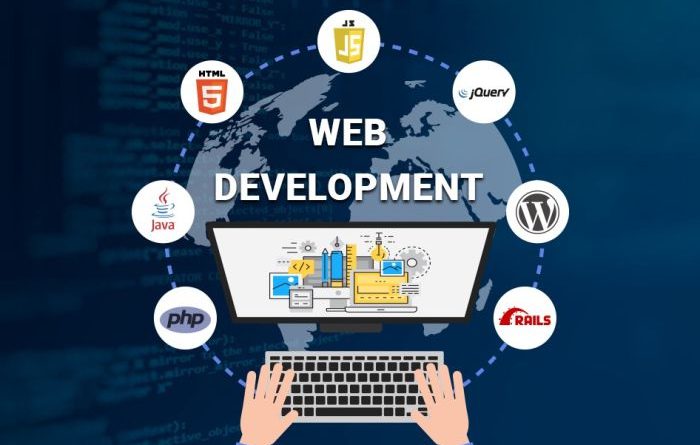The Future of Web: User-Friendly Design, Maximum Impact
Introduction to Web Development
In the digital age, having a strong online presence is paramount for businesses and individuals alike. Web development, the process of creating websites and web applications, plays a crucial role in this endeavor. In this comprehensive guide, we will delve into the world of web development, exploring various technologies and tools used to build interactive, user-friendly, and responsive websites.
Understanding Web Development
What is Web Development?
Web development encompasses the tasks involved in developing websites for hosting via the internet or an intranet. It includes everything from designing simple static web pages to complex web-based applications.
The Evolution of Web Development
The journey of web development has witnessed remarkable transformations over the years. It began with static HTML pages in the early days of the World Wide Web, where content was fixed and unchanging. With the advent of CSS (Cascading Style Sheets), designers gained the ability to enhance the visual appeal of web pages by styling HTML elements. JavaScript further revolutionized web development by enabling dynamic interactions and client-side scripting.

Key Technologies and Tools
HTML: The Backbone of the Web
Hypertext Markup Language (HTML) serves as the foundation of web development, providing the structure for web pages. HTML elements define the various components of a webpage, such as headings, paragraphs, images, and links.
CSS: Enhancing Visual Appeal
Cascading Style Sheets (CSS) are used to style HTML elements, controlling the layout, colors, fonts, and overall visual presentation of a website. CSS enables designers to create visually appealing and cohesive web experiences across different devices and screen sizes.
JavaScript: Adding Interactivity
JavaScript is a versatile programming language that brings interactivity and dynamic behavior to web pages. With JavaScript, developers can create interactive features such as sliders, dropdown menus, form validation, and animations, enhancing the user experience.
PHP: Powering Dynamic Websites
PHP is a server-side scripting language commonly used for creating dynamic and interactive websites. It enables developers to generate dynamic content, interact with databases, handle forms, and perform various server-side tasks.
ASP.NET: Building Robust Web Applications
ASP.NET is a web application framework developed by Microsoft for building robust and scalable web applications. It provides developers with tools, libraries, and templates for building secure, enterprise-grade web applications.
Frameworks and Libraries
Frameworks and libraries such as React, Angular, and Vue.js have gained popularity for simplifying and streamlining web development. These tools provide pre-built components, routing systems, state management, and other features that accelerate the development process and improve code maintainability.
Creating User-Friendly and Responsive Websites
Responsive Web Design
Responsive web design is an approach to Web development that ensures websites adapt seamlessly to various devices and screen sizes, providing an optimal viewing experience for users. By employing techniques such as fluid grids, flexible images, and media queries, developers can create websites that look and function well across desktops, tablets, and smartphones.
Accessibility Considerations
Web accessibility is the practice of designing and developing websites that are inclusive and accessible to users with disabilities. Accessibility considerations include providing alternative text for images, ensuring keyboard navigation, using proper heading structures, and maintaining color contrast for readability.
Optimizing Website Performance
Website performance optimization is crucial for delivering fast and efficient user experiences. Techniques such as minimizing file sizes, reducing server response times, leveraging browser caching, and optimizing images can significantly improve website performance and loading times.
Best Practices and Trends
SEO Best Practices
Search engine optimization (SEO) is essential for improving the visibility of your website in search engine results pages (SERPs). SEO best practices include optimizing website content, meta tags, URLs, and site structure to rank higher in search engine rankings and drive organic traffic.
Mobile-First Approach
With the proliferation of mobile devices, adopting a mobile-first approach to web design and development has become increasingly important. By prioritizing mobile users and designing websites with mobile devices in mind, developers can ensure a seamless and engaging user experience across all devices.
Progressive Web Apps (PWAs)
Progressive Web Apps (PWAs) are web applications that leverage modern web technologies to provide users with a native app-like experience on the web. PWAs offer features such as offline access, push notifications, and home screen installation, blurring the line between web and native mobile apps.
Conclusion
Web development is a dynamic and ever-evolving field that plays a crucial role in shaping the online world. By leveraging various technologies and tools, developers can create interactive, user-friendly, and responsive websites that engage and delight users. Whether you’re a seasoned developer or just starting, embracing best practices and staying abreast of trends is key to success in the world of web development.
FAQs (Frequently Asked Questions)
1. What skills are required for web development?
Web development requires proficiency in programming languages such as HTML, CSS, and JavaScript, as well as an understanding of web design principles and frameworks.
2. How long does it take to learn web development?
The time it takes to learn web development varies depending on individual aptitude and dedication. With focused study and practice, one can become proficient in web development within several months to a year.
3. What is the difference between front-end and back-end development?
Front-end development focuses on the user interface and interactions, while back-end development involves server-side programming and database management to power the website’s functionality.
4. Are there any free resources available for learning web development?
Yes, there are numerous free online resources, tutorials, and courses available for learning web development, including platforms like Codecademy, freeCodeCamp, and YouTube tutorials.
5. How can I stay updated with the latest trends in web development?
To stay updated with the latest trends in web development, follow industry blogs, attend webinars and conferences, participate in online communities, and regularly explore new tools and technologies.

